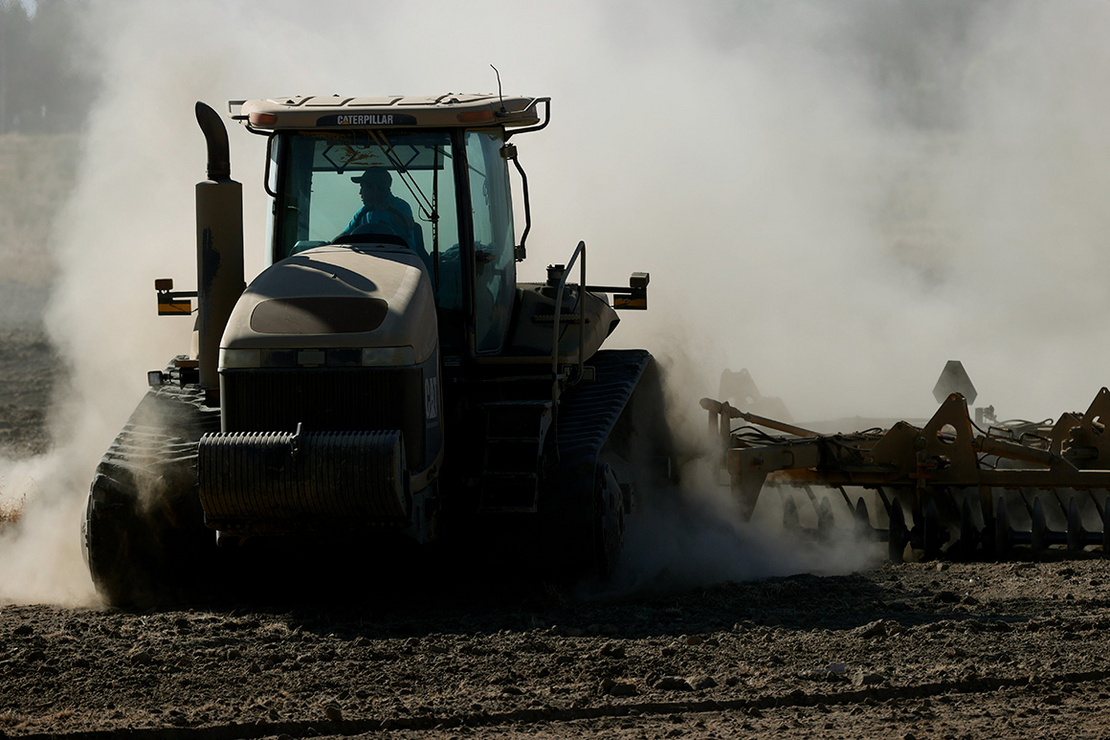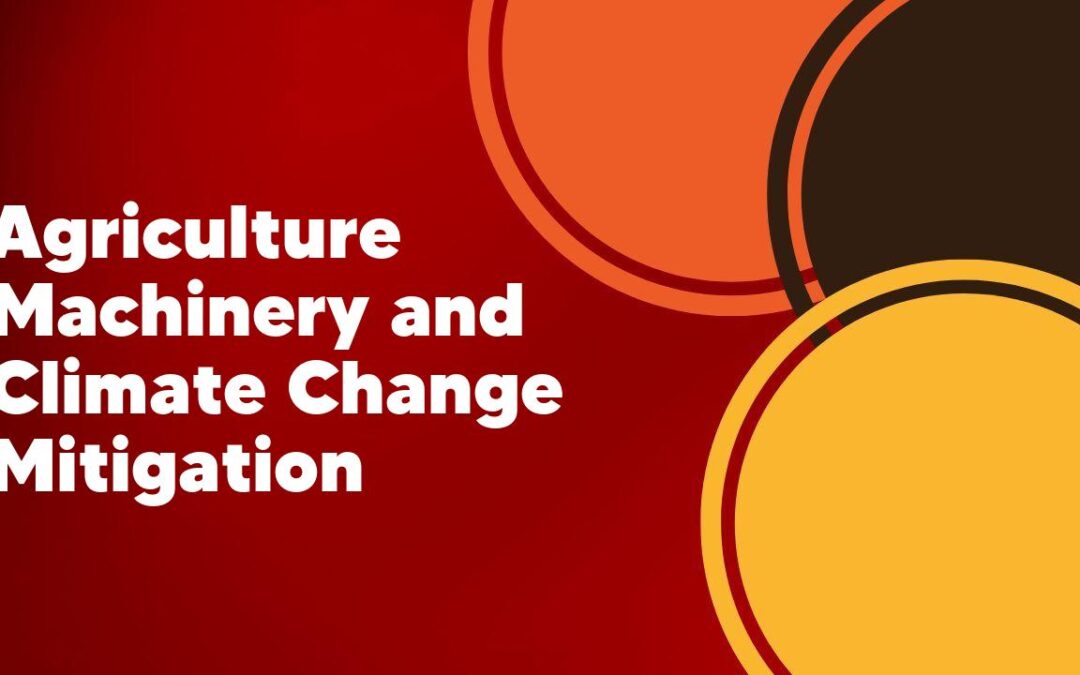This article explores the role of agriculture machinery in mitigating climate change. Agriculture is one of the major contributors to greenhouse gas emissions, but with the use of advanced machinery, it has the potential to become a part of the solution. By improving efficiency and reducing emissions, agriculture machinery can play a significant role in mitigating the impact of climate change on the environment.
1. The impact of agriculture machinery on climate change
As a farmer, I have witnessed first-hand the significant impact that agriculture machinery has on climate change. The use of these machines, while essential for increasing efficiency and productivity, also contributes to greenhouse gas emissions. From the tractors and combines we rely on to the irrigation systems and fertilizers we use, all of these aspects of modern agriculture release carbon dioxide and other pollutants into the atmosphere. This not only contributes to global warming but also poses a threat to the environment and future generations. It is crucial that we find innovative solutions to reduce the carbon footprint of agriculture machinery and adopt sustainable practices to mitigate its impact on climate change.
2. Strategies for reducing greenhouse gas emissions in agriculture

There are several strategies that can be implemented to effectively reduce greenhouse gas emissions in agriculture. Firstly, farmers can adopt precision agriculture techniques, such as using GPS and advanced sensors, to optimize the use of fertilizers and irrigation water, thus minimizing nitrogen and methane emissions. Additionally, implementing sustainable farming practices like crop rotation and cover cropping can improve soil health and reduce the need for chemical inputs. Another strategy is the promotion of agroforestry, where trees are integrated into agricultural landscapes to sequester carbon and provide additional income through timber and fruit production. Finally, encouraging the use of renewable energy sources, such as solar panels or biogas digesters, can help reduce emissions associated with energy use in farming operations. By implementing these strategies, we can make significant progress in mitigating greenhouse gas emissions in the agricultural sector and contribute to a more sustainable future.
3. The role of precision agriculture in climate change mitigation
Precision agriculture plays a crucial role in mitigating the effects of climate change. As a farmer, I have witnessed firsthand the positive impact that precision agriculture techniques have had on reducing greenhouse gas emissions and conserving resources. By utilizing technologies such as satellite imagery, sensors, and GPS-guided machinery, I am able to maximize the efficiency of my farming practices. This means applying fertilizers and pesticides only where they are needed, minimizing waste and preventing soil erosion. Additionally, precision agriculture allows me to optimize irrigation practices, minimizing water usage and preserving this precious resource. Ultimately, precision agriculture not only helps me increase productivity and profitability but also contributes to a more sustainable and resilient agricultural sector in the face of climate change.
4. Advancements in sustainable farming practices and machinery
In recent years, there have been significant advancements in sustainable farming practices and machinery, revolutionizing the way we cultivate and harvest our crops. As a farmer, I am thrilled to witness the positive impact these developments have on both the environment and our overall productivity. With the adoption of precision agriculture techniques, such as GPS-guided tractors and drones, we can now optimize our land usage, reduce water and pesticide consumption, and minimize soil erosion. Additionally, the integration of renewable energy sources on our farms, such as solar panels and wind turbines, allows us to be more self-sufficient and decreases our reliance on fossil fuels. These advancements not only contribute to a greener and more sustainable future but also improve the economic viability of farming operations. I am excited to continue exploring and implementing these advancements on my farm, ensuring a prosperous and environmentally-conscious future for generations to come.
5. Challenges and opportunities for integrating renewable energy in agriculture machinery
As a female farmer, I have witnessed firsthand the challenges and opportunities that come with integrating renewable energy in agriculture machinery. One of the main challenges is the initial cost of purchasing and installing renewable energy systems. While these systems may have long-term financial benefits, the upfront investment can be daunting for small-scale farmers like myself. Additionally, there is a need for education and training to ensure that farmers are equipped with the knowledge and skills needed to properly operate and maintain renewable energy systems. However, I also see great potential in renewable energy for agriculture. The use of solar panels or wind turbines can provide a reliable and sustainable source of power, reducing our reliance on fossil fuels and decreasing greenhouse gas emissions. By embracing renewable energy, farmers have the opportunity to become more self-sufficient, reduce operating costs, and contribute to a greener and more sustainable future.
6. Policy implications for promoting sustainable agriculture practices with machinery
As someone passionate about sustainable agriculture, I believe that there are several policy implications that can help promote the adoption of more sustainable practices with machinery. Firstly, governments can provide incentives and subsidies to farmers who invest in environmentally friendly machinery, such as those that reduce emissions or use renewable energy sources. Additionally, policymakers should prioritize research and development to encourage the creation of innovative machinery that can improve sustainability in agriculture. Moreover, it is crucial to invest in the education and training of farmers, providing them with the knowledge and skills necessary to effectively use sustainable machinery. Lastly, policymakers should consider implementing regulations that encourage the proper disposal and recycling of old machinery, ensuring that it does not contribute to environmental pollution. By addressing these policy implications, we can move towards a more sustainable future in agriculture.
Conclusion
In conclusion, agricultural machinery plays a crucial role in mitigating climate change by improving efficiency and reducing greenhouse gas emissions in the agriculture sector. The deployment of advanced machinery such as precision farming equipment and autonomous robots can help optimize resource usage, minimize waste, and decrease the overall carbon footprint of farming operations. As the world grapples with the challenges of climate change, it is imperative to continue promoting the adoption of sustainable agricultural practices and investing in innovative machinery to ensure a more environmentally friendly and resilient food system.
1. How does agriculture machinery contribute to climate change mitigation?
Agriculture machinery plays a significant role in climate change mitigation by improving farming practices and reducing greenhouse gas emissions. Modern machinery increases efficiency in agricultural processes, leading to reduced energy consumption and lower carbon footprints.
2. What specific practices can be implemented with agriculture machinery for climate change mitigation?
Agriculture machinery can enable various climate change mitigation practices such as precision farming, conservation tillage, and controlled-release fertilizer application. These practices help minimize soil degradation, enhance nutrient management, and reduce emissions of carbon dioxide, methane, and nitrous oxide.
3. Are there any drawbacks associated with agriculture machinery for climate change mitigation?
While agriculture machinery aids in climate change mitigation, there are some drawbacks to consider. Increased mechanization may lead to carbon emissions during machinery production and operation. Additionally, the adoption of machinery may not be feasible for small-scale farmers due to financial constraints and limited access to technology.
4. Does agriculture machinery reduce the need for manual labor in farming?
Yes, agriculture machinery automates various farming tasks and reduces the reliance on manual labor. This allows farmers to work more efficiently, save time, and focus on other essential aspects of farming. However, manual labor may still be necessary for certain activities requiring precision or delicate handling.
5. How can agriculture machinery contribute to sustainable farming practices?
Agriculture machinery promotes sustainable farming practices by enabling resource-efficient operations. Precision application of inputs, such as water, fertilizers, and pesticides, helps minimize wastage and environmental impacts. Furthermore, machinery like soil sensors and automated irrigation systems aid in optimizing resource utilization and conserving natural resources.
6. What are the economic benefits of using agriculture machinery for climate change mitigation?
The use of agriculture machinery for climate change mitigation can bring several economic benefits. Improved efficiency leads to cost savings by reducing input wastage and optimizing resource utilization. Additionally, machinery can enable higher crop yields and productivity, ultimately enhancing farmers’ income and contributing to overall economic development in the agricultural sector.

